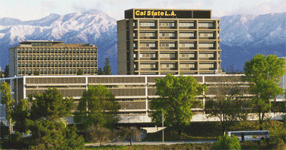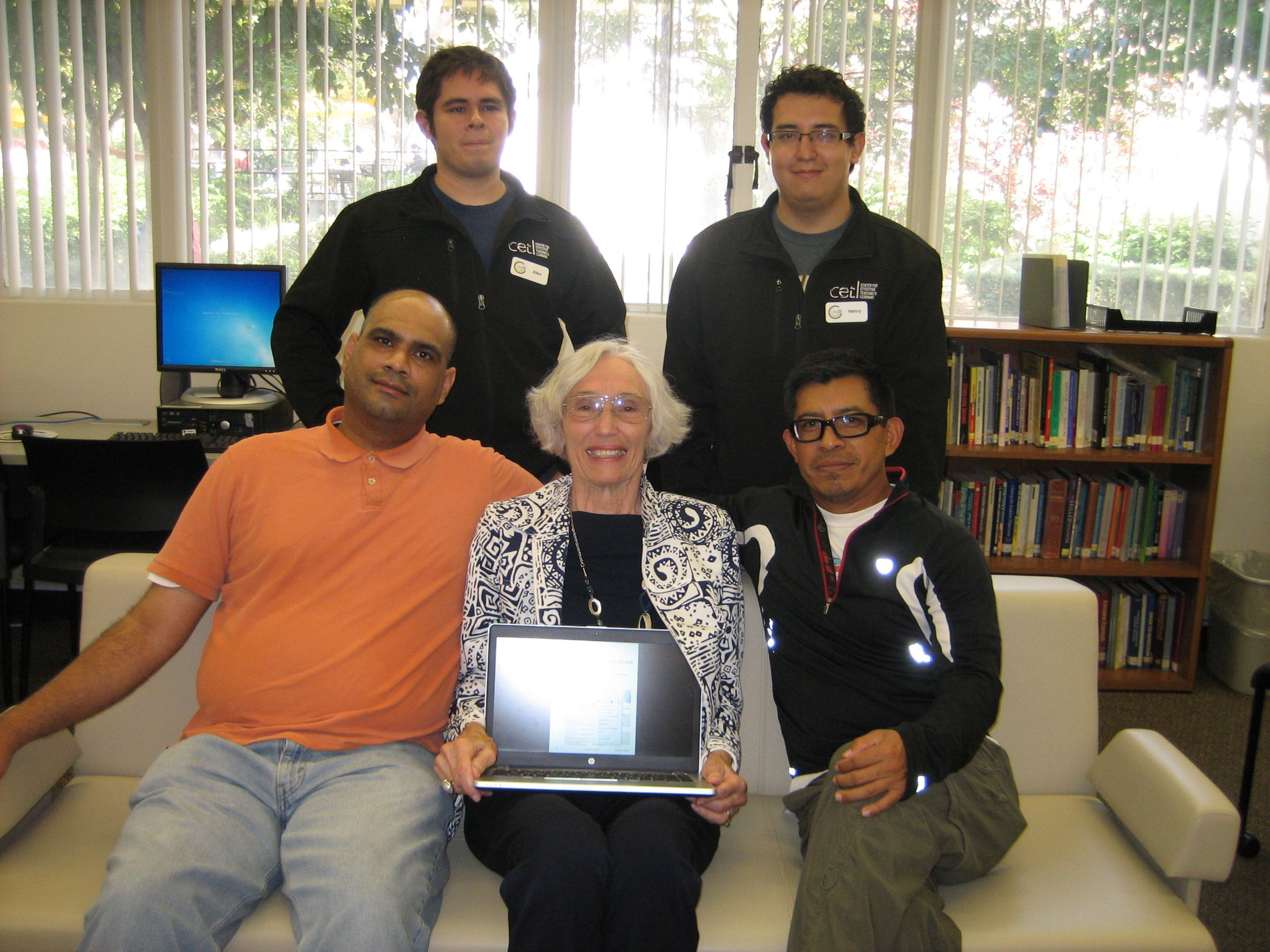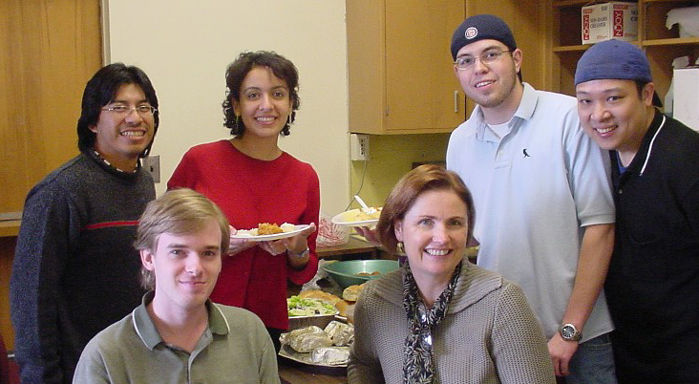|

Cal State Los Angeles
|

|

Do you want to submit - deposit
- a sample of your work
in
the National Curve Bank?
We are happy to display an animated submission and include a
link to your personal site.
|
2015 Team
From the back left,
Alexander Morales and Henry
Acevedo. In front, Gustavo Gordillo, Dr. Shirley Gray and Flavio
Argueta. Daniel Ye Ding was absent. We work together in the CETL Lab of
California State University, Los Angeles.
|
2000
- 2001
- The Founding Team
Reading
clockwise from Dr. Stewart
Venit on
the above left, J. R. Lara, Jennifer Cha, Gayle Burns, Hong Kha,
Alexander Tascon, Louis Santillan,
and Dr.
Shirley Gray.
This was the original team of CSU
students, staff and
faculty
maintaining the NCB web site.
Back
row: Alexander Tascon, Hong Kha, Dimitri Kosturos, Gayle Burns,
Matthew Nelson. Front row: Wing T. (Sterling) Wong, Dr.
Stewart Venit, Dr. Randolph Cooper, Dr. Shirley B. Gray, and Dr. Russ
Abbott.
The 2006 team is
below. From the left, Flavio Argueta,
Matthew Nelson, Shadi Kalbasi, Gayle Burns,
Nicholas Mew, and Jonathan Yee. We work
together on a daily basis in the ELTS
Lab
of California State University, Los Angeles. |
|
How to Submit a Curve
|
| The National
Curve
Bank (NCB) students,
staff and faculty welcome submissions that illustrate, in a way not
possible
on the printed page, the features of an interesting curve. A typical
submission
includes an animated gif file that displays the curve and, optionally,
an accompanying text file that describes unusual features of the curve,
discusses historical information related to it, or provides interesting
applications of its use. We ask that your submission be relatively
brief,
generating hard copy that is not more than one page in length. |
|
Submission Details
|
| To submit a
curve to
the NCB:
1. Create the curve using the
software
of your choice;
for example, Mathematica, Mathcad, Maple, Derive, or a variety of
graphing
calculators.
2. Animate the curve by creating a
sequence of images
saved as gif files and then using the appropriate software (for
example,
Mathematica, Adobe PhotoShop, Adobe ImageReady, or GIF Construction
Set).
Save the animation as a single animated gif file. Be sure to use
the < .gif > extension when you make your final "Save As."
3. Create a separate text file, if
you’d
like, with interesting
information about the curve (for example, unusual features, historical
information, or special applications). Save the text in a
separate
file; for example, MS Word (.doc) or as plain text.
4. Include your name, affiliation
and
address, e-mail
address, the name of the curve, the equations you used to create it,
and
a very brief description of the files you are sending. Attach the
animated
gif file and the text file (if applicable) to this e-mail. Please
include references you have used.
5. Send the file(s) as e-mail
attachments, using the email
address of the NCB:
< sgray@calstatela.edu
> . You may use the button at the bottom of this page.
|
|
Guidelines
for Creating the Curve
|
1. Create a graphic that is 250 to
350
pixels wide, unless
the animation requires a particularly wide display. In this case, do
not
exceed 600 pixels.
2. If your graphing software
allows for
color and varying
curve thickness, make use of these features. In particular, do not use
one-pixel-thick curves.
3. If your graphing software does
not
save graphics in
a gif format, paste the images into a graphics program (for example,
Adobe
PhotoShop or Paint Shop Pro) and save them there.
4. In animating the curve, use a
sufficient number of
images and an appropriate delay time between them to ensure that the
resulting
animation is relatively smooth.
|
|
Important
Notes Concerning Your Submission — Please Read
|
1. In submitting material to the
National
Curve Bank
(NCB), you ("the author") agree and consent to the following terms:
* No compensation will be paid for
the
submitted material
or the rights granted to the NCB regarding this material.
* The author assumes full
responsibility
for the content
of the submitted material and warrants that this material does not
violate
any patent, copyright, trademark, or trade secret.
* The NCB does not assume any
liability for
the functionality
of the submitted material or for determining its functionality.
* The author grants the NCB
permission to
duplicate and
authorizes others to duplicate the submitted material.
* The NCB reserves the right to
refuse
submitted material
it deems not suitable for the NCB Web site and to remove any material
from
the site at any time and without notice.
2. All submitted curves will be
reviewed
for suitability
by the National Advisory Board of the National Curve Bank. We will
inform
you, as quickly as possible, as to whether your curve will be published
on the NCB Web site. |
We gratefully acknowledge
support
and encouragement
from

National Science Foundation
DUE - CCLI Award
|

Academic Technology Support ATS
for providing the server.
Faculty Instructional Technology Support
Center
FITSC Lab for expertise.
Innovative Instruction Award 2001-2002
|
|

|
|
|








